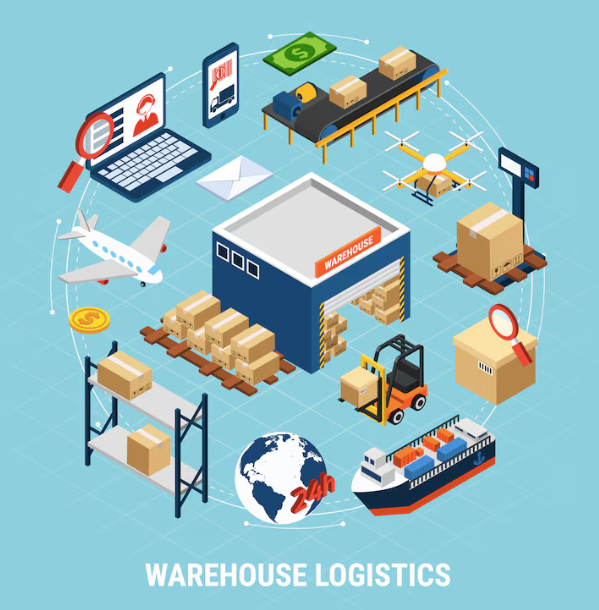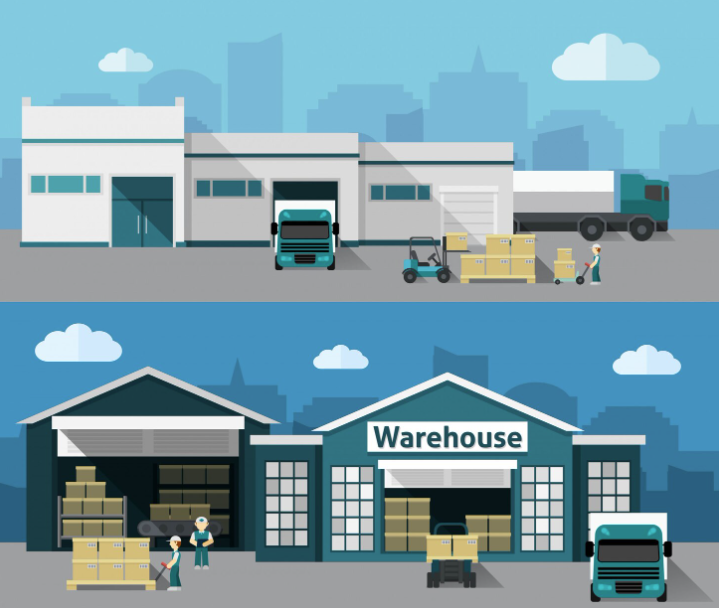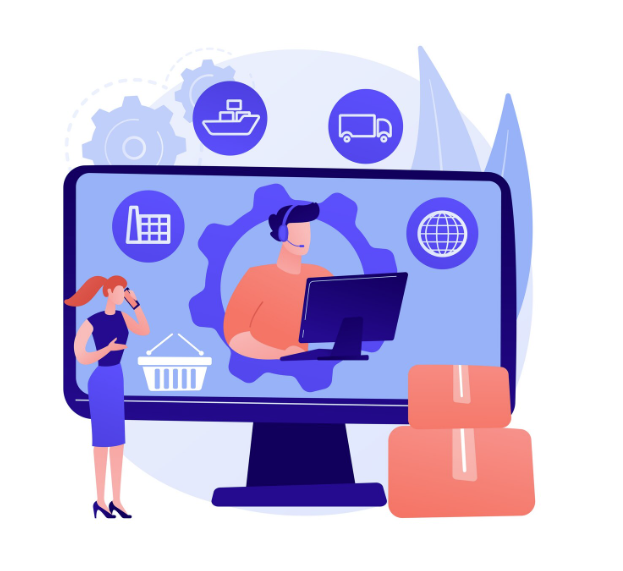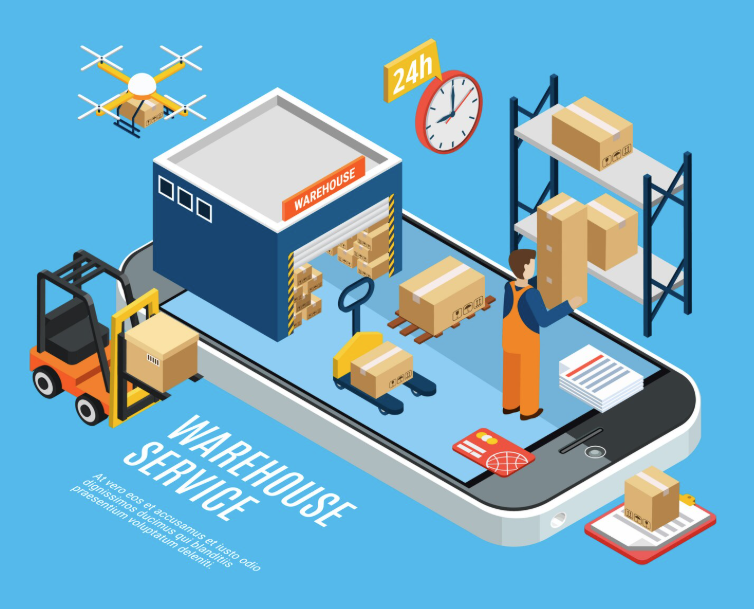Inventory management in the Logistics industry is not just about organizing goods within a storage space; it is a key link that determines order fulfillment speed, operating costs, and customer satisfaction. A small mistake in inventory control can lead to delayed deliveries, loss, and damage to the company's reputation with partners and customers.
Implementing an ERP (Enterprise Resource Planning) system in the warehouse management module offers a comprehensive solution: data is updated in real-time, processes are automated, and all departments can access information instantly. This is not just a supporting tool, but a strategic platform that helps Logistics businesses operate leanly, save costs, and create a sustainable competitive advantage.
1. What is ERP and its role in logistics

ERP (Enterprise Resource Planning) is an integrated management system that helps businesses centralize and synchronize data from various departments—suchas sales, finance, human resources, and operations—onto a single platform. In the Logistics industry, ERP plays a particularly important role because all activities—from booking, warehousing, waybill processing, to payment—are tightly linked and require a high degree of accuracy.
Thanks to ERP, Logistics companies can manage warehouses in real-time, connect directly with transportation and accounting, and make quick decisions based on unified data. This not only helps reduce operating costs but also enhances efficiency and customer service capability.
2. Challenges in traditional logistics warehouse management

Traditional warehouse management methods often face several limitations: data is scattered across multiple disparate files, manual data entry is prone to errors, and it's difficult to gain a holistic view of inventory. As the volume of goods grows, delays in order processing, stockouts, or unexpected overstocking occur frequently, directly impacting the company's reputation and costs.
Furthermore, the lack of integration between the warehouse and other departments like transportation, accounting, or customer service disrupts coordination. This is precisely why many Logistics businesses struggle to optimize operations and find it difficult to meet the increasingly high demands of the market.
3. ERP Application in Warehouse Management for the Logistics Industry

ERP (Enterprise Resource Planning) introduces an entirely new approach to warehouse management for Logistics businesses, replacing fragmented and manual methods. By implementing the warehouse management module, ERP not only helps track inventory movement (inflow, outflow, and stock balance) but also creates a seamless operational flow, connecting the warehouse with other departments across the value chain. Specifically, ERP offers the following standout features:
Real-Time nventory management
The system instantaneously updates the quantity, type, and location of goods in the warehouse. This minimizes unplanned shortages or surpluses, while allowing managers to make swift decisions based on accurate data. With AI analyzing inventory data, businesses can also predict future purchasing needs and plan optimal supply.
Tight Integration with other logistics operations
With specialized ERP systems designed for Logistics enterprises, ERP links warehouse data with booking, bills of lading (HBL/MBL), orders, and even pricing. Thanks to this integration, information is synchronized from the booking stage until the goods enter the warehouse, reducing errors and significantly shortening processing time. AI can automatically cross-reference booking data with bills of lading and inventory, detecting anomalies for timely alerts.
Process automation with AI and OCR
This is a new feature not available in every ERP system, specific to the Logistics industry. Instead of manual data entry, ERP supports the use of barcodes, QR codes, and AI-OCR (Optical Character Recognition) to recognize and automatically populate information from documents of various shipping lines. This not only reduces the burden of data entry but also eliminates human error. AI can also "learn" from complex document templates, making the system increasingly accurate and flexibly adaptive.
Smart warehouse coordination
ERP allows for optimal storage location assignment based on capacity, inventory turnover (fast-moving/slow-moving items), and shipping schedules. The picking & packing coordination system, supported by AI, can arrange the shortest retrieval route, reducing staff travel time, thereby shortening order preparation time and boosting overall warehouse productivity.
Interdepartmental and operational chain connection
ERP is no longer confined to the warehouse; it directly connects with finance, accounting, transportation, and customer service (CRM). When the warehouse confirms a shipment, the system automatically updates the transportation department to schedule vehicles, simultaneously sends information to accounting for document issuance, and to CRM for customer follow-up. AI assists in generating real-time, multidimensional reports (dashboards), allowing leadership to easily monitor the entire operation.
Thanks to these applications, ERP goes beyond just efficient warehouse management; it acts as a "bridge" between the warehouse and the entire Logistics operational chain, thereby helping businesses reduce costs, increase productivity, and improve the customer experience.
4. Benefits of implementing ERP warehouse management in Logistics

Adopting ERP for warehouse management in the Logistics industry doesn't just simplify processes; it also delivers long-term strategic benefits for the business:
Increased accuracy and transparency
One of the biggest challenges in traditional warehouse management is the errors caused by manual data entry and fragmented information. ERP overcomes this by synchronizing data in real-time: from inventory stock levels, inbound and outbound slips, to bill of lading information (HBL/MBL). This allows management to easily track accurate reports and gives employees an overall view, thereby minimizing data discrepancies and enhancing transparency throughout the entire operational chain.
Reduced operating osts
With ERP, businesses can control inventory at an optimal level, reducing the risks of excess stock or stockouts that lead to costly rush orders. The system also supports optimizing warehouse space, helping to utilize storage space more effectively. Additionally, as the volume of manual work is significantly reduced through automation, businesses can streamline their workforce and achieve long-term operating cost savings.
Faster order processing speed
The system supports barcode, QR code, AI-OCR, and intelligent picking-packing coordination, which helps shorten order processing time, increase warehouse productivity, and ensure on-time delivery.
Seamless operational chain connectivity
Unlike standalone software, ERP functions as an integrated platform. The warehouse management module is directly linked to transportation, accounting, CRM, and even customer care. Thanks to this interconnection, data is shared instantly between departments, eliminating delays caused by manual communication. For example, when the warehouse department confirms goods are ready for shipment, the information is immediately synchronized with transportation for vehicle coordination and simultaneously updated for accounting to issue documents.
Improved customer xperience
Customers can receive inventory reports, track order processing progress, and enjoy more transparent delivery and receipt. This builds greater trust and, at the same time, enhances the business's competitiveness in the market.
5. Sota Solutions – ERP solution provider for logistics businesses
Sota Solutions is a provider of software that drives the digitalization of the Logistics industry in Vietnam. With the Sota FMS platform, an ERP system specifically designed for Freight Forwarder and Logistics enterprises, Sota Solutions offers a comprehensive set of solutions: from warehouse management, transportation, and booking to finance and CRM, helping businesses manage operations efficiently and enhance their competitive advantage.
A key highlight is the system's integration of AI, such as the intelligent AI-OCR, which can read and automatically input data directly into the Job on the system from booking files of various shipping lines. As a result, businesses reduce manual data entry time by up to 70%, optimize personnel costs, and simultaneously increase flexibility in document processing.
With experience implementing solutions for numerous domestic and international logistics customers, Sota Solutions not only delivers technology but also partners with businesses to restructure operational processes, aiming for efficiency, transparency, and sustainability.
6. Conclusion
In a specialized industry like Logistics, where every minor mistake can lead to significant costs and loss of customer credibility, warehouse management with ERP is not just a trend but has become a vital factor. ERP helps businesses optimize storage processes, minimize errors, save costs, and, more importantly, build sustainable competitive capacity. Given the trend of applying artificial intelligence across multiple industries, ERP is not just simply integrated with other systems like CRM but also leverages AI to develop more specialized features for the industry's specific needs.
With a specialized platform like Sota FMS/ERP, Logistics businesses can rapidly digitalize processes, connecting warehousing with transportation, finance, and customer care in one synchronized system. In particular, the AI-OCR feature supporting the reading and processing of booking documents from multiple shipping lines has proven its outstanding effectiveness in shortening turnaround time and enhancing work efficiency.
It's time for Logistics enterprises to boldly transition from traditional warehouse management to a modern ERP platform. This will not only help optimize today's operations but also unlock a long-term competitive advantage for the future. Contact us for a consultation and to receive free materials on technology solutions tailored for the logistics industry.